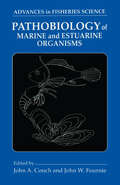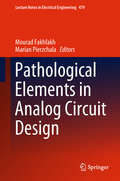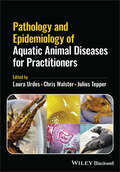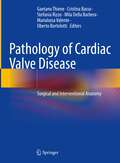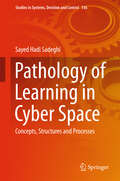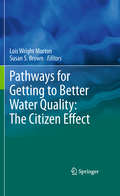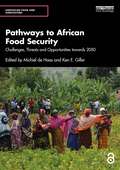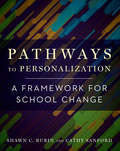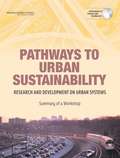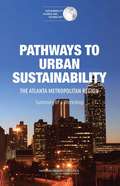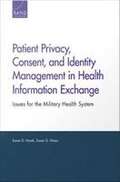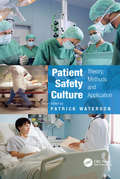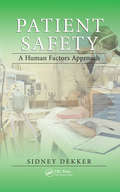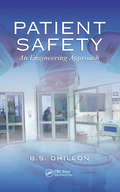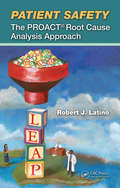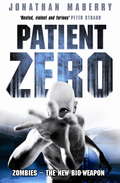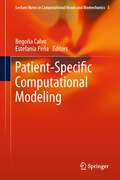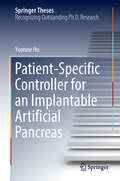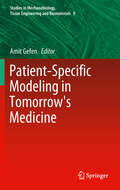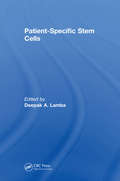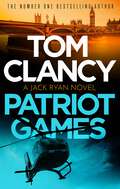- Table View
- List View
Pathobiology of Marine and Estuarine Organisms (Advances In Fisheries Science Ser.)
by John A. Couch; John W. FourniePathobiology of Marine and Estuarine Organisms is a comprehensive, up-to-date review of aquatic animal pathobiology covering infectious and non-infectious diseases of vertebrates such as marine mammals and fishes, in addition to diseases of invertebrates such as crustacea, mollusks, and lower phyla. The book provides critical information on viral, fungal, bacterial, parasitic, and neoplastic diseases of fish and invertebrates. Written by top-notch experts in the field, Pathobiology of Marine and Estuarine Organisms emphasizes pollution-associated diseases and includes an important review on the effects of pollution on marine mammals. The book will be a welcome addition to the libraries of aquatic and marine biologists, aquatic toxicologists, fisheries biologists, aquaculturalists, fish and invertebrate pathologists, and aquatic animal parasitologists.
Pathogen removal in aerobic granular sludge treatment systems (IHE Delft PhD Thesis Series)
by Mary Luz Barrios HernàndezThis book describes pathogen removal processes in aerobic granular sludge (AGS) wastewater treatment systems. Faecal indicators (E. coli, Enterococci, coliforms and bacteriophages) were tracked in full-scale AGS facilities and compared to parallel activated sludge (CAS) systems. AGS showed similar removals as the more complex CAS configurations. Removal mechanisms investigated in laboratory-scale reactors showed that the AGS morphology contributes to the removal processes. By tracking E. coli and MS2, it was observed that organisms not attached to the granules are predated by protozoa during aeration. 18S RNA gene analyses confirmed the occurrence of bacterivorous organisms (e.g., Epistylis, Vorticella, Rhogostoma) in the system. Particulate material in the feeding stimulated their development, and a protozoa bloom arose when co-treating with (synthetic) faecal sludge (4 % v/v). An overview of the diverse eukaryotic community in laboratory reactors and real-life applications is also provided. The microbial diversity of the influent was different compared to AGS and CAS sludge samples. However, no clear differences were found between them on species level. This study contributes to a better understanding of the mechanisms behind pathogen removals in AGS systems.
Pathological Elements in Analog Circuit Design (Lecture Notes In Electrical Engineering #479)
by Mourad Fakhfakh Marian PierzchalaThis book is a compilation and a collection of tutorials and recent advances in the use of nullors (combinations of nullators and norators) and pathological mirrors in analog circuit and system design. It highlights the basic theory, trends and challenges in the field, making it an excellent reference resource for researchers and designers working in the synthesis, analysis, and design of analog integrated circuits. With its tutorial character, it can also be used for teaching. Singular elements such as nullors and pathological mirrors can arguably be considered as universal blocks since they can represent all existing analog building blocks, and they allow complex integrated circuits to be designed simply and effectively. These pathological elements are now used in a wide range of applications in modern circuit/system theory, and also in design practice.
Pathological Voice Analysis
by David Zhang Kebin WuWhile voice is widely used in speech recognition and speaker identification, its application in biomedical fields is much less common. This book systematically introduces the authors’ research on voice analysis for biomedical applications, particularly pathological voice analysis. Firstly, it reviews the field to highlight the biomedical value of voice. It then offers a comprehensive overview of the workflow and aspects of pathological voice analysis, including voice acquisition systems, voice pitch estimation methods, glottal closure instant detection, feature extraction and learning, and the multi-audio fusion approaches. Lastly, it discusses the experimental results that have shown the superiority of these techniques. This book is useful to researchers, professionals and postgraduate students working in fields such as speech signal processing, pattern recognition, and biomedical engineering. It is also a valuable resource for those involved in interdisciplinary research.
Pathology and Epidemiology of Aquatic Animal Diseases for Practitioners
by Laura Urdes Chris Walster Julius TepperPathology and Epidemiology of Aquatic Animal Diseases for Practitioners Comprehensive reference on the diseases and applied epidemiology of all aquatic animal taxa, including invertebrates and vertebrates Pathology and Epidemiology of Aquatic Animal Diseases for Practitioners provides information on the diseases and applied epidemiology of all aquatic animal taxa, including invertebrates and vertebrates, along with information on applied epidemiology, acknowledging the One Health concept, and discussion on probabilities of disease outbreaks occurring and assesses the economic costs of treating those outbreaks, if applicable. Divided into two sections, the book looks at the pathology of major aquatic taxa and their associated infectious diseases—parasitic, viral, and bacterial—and non-infectious diseases. Each includes an overview, their host range and transmission, signs and diagnosis, differentials, and treatment and management. These assets are accompanied by clinical signs-lesion differential charts. Sample topics discussed in Pathology and Epidemiology of Aquatic Animal Diseases include: Echinoderms, including crinoidea (crinoids, sea lilies, feather stars, and asteroidea), sea stars/starfish, and ophiuroidea (brittle stars and basket stars) Reptiles, including turtles (freshwater and marine), crocodilians, marine iguanas, and sea snakes Pinnipeds, including otariidae (eared seals), odobenidae (walruses), phocidae (earless seals), mustelidae (otters), and sirenia (manatees and dugongs) Tropical marine aquarium fish (damselfish, angelfish, gobies, wrasses, parrotfish, butterfly fish, and clownfish) and anemones. A highly useful reference for veterinary practitioners, academic staff, and researchers, Pathology and Epidemiology of Aquatic Animal Diseases is also suitable for those who are interested in aquatic veterinary medicine and serves as a companion to Fundamentals of Aquatic Veterinary Medicine, written by the same editorial team.
Pathology of Cardiac Valve Disease: Surgical and Interventional Anatomy
by Cristina Basso Gaetano Thiene Marialuisa Valente Stefania Rizzo Mila Della Barbera Uberto BortolottiCardiac valve diseases are a major cause of morbidity and mortality around the globe. In third world countries, inflammatory rheumatic valve disease in the young represents an endemic calamity, while in Western countries, degenerative valve diseases like senile calcific aortic stenosis and mitral valve prolapse as a result of mucoid degeneration with incompetence are major causes of death in adults/the elderly. Since the 1960s, surgical valve replacement has been the only treatment option, requiring sternotomy, cardiopulmonary bypass and cardiac arrest. Permanent anticoagulation for mechanical valves and the limited durability of biological valves constituted significant drawbacks; moreover, these surgeries often requires surgical replacement. The cardiac registry at the University of Padua, Italy, has gathered more than twelve hundred cases of failed prosthetic valves, offering a unique resource for teaching and research. Conservative valve repair using minimally invasive technique showed that replacement of the native valve with sternotomy can be spared. Moreover, in the last decade venous or arterial approaches like TAVI were developed. Presenting the essential surgical and interventional anatomy and pathology in detail, this book offers a valuable tool for cardiologists, cardiac surgeons and pathologists, as well as people in training and scientists working in the field of medical devices and biological compatibility.
Pathology of Learning in Cyber Space: Concepts, Structures And Processes (Studies in Systems, Decision and Control #156)
by Sayed Hadi SadeghiThis book is divided into seven chapters, beginning with discussions of the main concepts of cyberspace, the relationship between cyberspace and real space, learning and education. It describes the relationship between cyberspace and real space, and presents capacities, judiciary, and concepts related to cyberspace. Cyber curricular education forms are then described in terms of teaching and learning resources in cyberspace. The discussion presented in this book consists of two main sections: The first section, outlines the objectives of training in cyberspace at different levels, while the second section describes the injuries caused by learning and training in cyberspace at different levels, and then highlights how cyber training is handled and receives feedback. Lastly, the authors provide a summary of the topics presented. Most other discussions are general and present the overall benefits of e-learning and e-teaching that is formally carried out in universities and schools through cyberspace. But, unfortunately, none of them fully explores the learning, education and cyber-training resources which should be used by individuals, groups, organizations, governments, and others in pursuing to achieve their goals. In addition to this, they do not pay much attention to the challenges and injuries caused by learning and teaching in cyberspace. This has led the authors to investigate these and other issues related to learning and training in cyberspace more widely and comprehensively, and also consider them beyond official formal learning and education. Most importantly they address issues such as the injuries and challenges that, in different ways and at different levels result from learning and education in this space. As such this book goes beyond simple and repetitive issues that have been raised concerning cyberspace, and underlines the challenges it poses. Although intended for scholars and students from the fields of science education, information technology, sociology and educational technology as well as interested parties and related authorities, this book is also helpful for people wishing to better understand new topics, such as cyberspace, learning and training in cyberspace, and related issues. It is of interest to a wide range of enthusiasts, with different educational, specialist and executive backgrounds, including academics, policymakers, managers and planners from educational and cultural institutions
Pathway Design for Industrial Fermentation
by Walter KochPathway Design for Industrial Fermentation Explore the industrial fermentation processes of chemical intermediates In Pathway Design for Industrial Fermentation, distinguished researcher Dr. Walter Koch delivers an expert overview on industrial fermentation production technology as compared with natural extraction, organic chemistry, and biocatalysis. The book offers key insights for professionals designing and monitoring fermentation processes. The author explores the applications, alternative production, biochemical pathways, metabolic engineering strategy, and downstream processing of various products—including C1 to C6 products—with a focus on low-value products with market prices below 4€ per kilogram. Products will include methane, ethane, acetate, lactic acid, alanine, and others. With specific commentary and insightful perspectives on the cost drivers and technological aspects critical to commercially successful applications, the book also includes: Thorough introductions to methane, ethanol, acetate, lactic acid, alanine, and 3-Hydroxypropionic acid Comprehensive explorations of 1,3-Propanediol, butanol, isobutanol, and isobutene Practical discussions of 1,4-butanediol, succinic acid, itaconic acid, and glutamic acid Fulsome treatments of isoprene, pentamethylenediamine, lysine, citric acid, and adipic acid Perfect for process engineers, biotechnologists, and chemical engineers, Pathway Design for Industrial Fermentation will also benefit biochemists and professionals working in the chemical and food industries.
Pathways for Getting to Better Water Quality: The Citizen Effect
by Susan S. Brown Lois Wright MortonThis book is about accomplishing change in how land is managed in agricultural watersheds. Wide-ranging case studies repeatedly document that plans, policies, and regulations are not adequate substitutes for the empowerment of people. Ultimately change on the land is managed and accomplished by the people that live on land within each watershed.
Pathways to African Food Security: Challenges, Threats and Opportunities towards 2050 (Earthscan Food and Agriculture)
by Ken E. Giller Michiel De HaasThis book examines Africa’s current food system and future challenges for food security over the next 25 years.Africa is on the rise and by 2050, the continent will be home to a quarter of the world’s population. The analysis presented in this book clearly shows that the African food system needs to transform at a much faster pace to ensure that the people it serves are food secure. This book begins with four contrasting case studies that focus on country-specific challenges in Egypt, Ethiopia, Senegal and Zimbabwe. This is followed by 15 thematic chapters organised in three sections on challenges, threats and opportunities. Individual chapters address a wide range of topics including climate change, water security, farm sizes, crop yields, conservation trade-offs, food prices, trade, conflict and structural change. The book concludes by discussing key pathways to improve Africa's food system and food security for the decades ahead.This book is essential reading for students, scholars and practitioners who work on global food security, sustainable food systems, food, health and nutrition and African development.
Pathways to Personalization: A Framework for School Change
by Shawn C. Rubin Cathy SanfordPathways to Personalization offers an innovative five-step framework to help school leaders and teacher teams design and implement blended and personalized learning initiatives based on local needs and interests. The book draws on principles of improvement science and change management, as well as work in nearly five hundred classrooms, to help educators define their own rationale for personalized learning; it guides them as they establish small pilot initiatives, determine criteria for success, evaluate their efforts, and create a path for replication and scale. Filled with activities and templates for organizing information and student feedback, the book also includes many examples of how district leaders, school principals, and teachers have successfully navigated the change process to create more student-centered classrooms. Shifting a school or district to offer more personalized learning requires a great deal of commitment, passion, and energy, but it also demands a strategic process. Pathways to Personalization meets this need by providing a field-tested road map for educators seeking ways to meet the academic and emotional needs of all students, and to empower them to take charge of their own learning.
Pathways to Urban Sustainability: Research and Development on Urban Systems - Summary of a Workshop
by National Research Council of the National AcademiesMore than half of the world's people now live in cities. In the U.S., the figure is 80 percent. It is worthwhile to consider how this trend of increased urbanization, if inevitable, could be made more sustainable. One fundamental shortcoming of urban research and programs is that they sometimes fail to recognize urban areas as systems. Current institutions and actors are not accustomed to exploring human-environment interactions, particularly at an urban-scale. The fact is that these issues involve complex interactions, many of which are not yet fully understood. Thus a key challenge for the 21st century is this: How can we develop sustainable urban systems that provide healthy, safe and affordable environments for the growing number of Americans living in cities and their surrounding metropolitan areas? To address this question, the National Research Council organized a workshop exploring the landscape of urban sustainability research programs in the United States. The workshop, summarized in this volume, was designed to allow participants to share information about the activities and planning efforts of federal agencies, along with related initiatives by universities, the private sector, nongovernmental groups, state and local agencies, and international organizations. Participants were encouraged to explore how urban sustainability can move beyond analyses devoted to single disciplines and sectors to systems-level thinking and effective interagency cooperation. To do this, participants examined areas of potential coordination among different R&D programs, with special consideration given to how the efforts of federal agencies can best complement and leverage the efforts of other key stakeholders. <i>Pathways to Urban Sustainability</i> offers a broad contextual summary of workshop presentations and discussions for distribution to federal agencies, regional organizations, academic institutions, think tanks and other groups engaged in urban research.
Pathways to Urban Sustainability: The Atlanta Metropolitan Region
by National Research Council of the National AcademiesThe U.S. population is more than 80 percent urban. Recognizing that many metropolitan areas in the United States have been experimenting with various approaches to sustainability, and that despite the differences among regions, there are likely some core similarities and transferable knowledge, Roundtable members selected the metropolitan Atlanta, Georgia region as a case study. The Atlanta region provided a compelling example for exploring urban sustainability issues because of the region's rapid growth rate, well-documented challenges with water, land use, and transportation; and its level of engagement with federal government agencies on matters related to sustainability. Pathways to Urban Sustainability: Lessons from the Atlanta Metropolitan Region: Summary of a Workshop explores the Atlanta region's approach to urban sustainability, with an emphasis on building evidence based foundation upon which policies and programs might be developed. The two day workshop held on September 30 and October 1, 2010 examined how the interaction of various systems (natural and human systems; energy, water and transportations systems) affect the region's social, economic, and environmental conditions. The intent of this workshop summary is to analyze a metropolitan region so that researchers and practitioners can improve their understanding of the spatial and temporal aspects of urban sustainability.
Patient Privacy, Consent, and Identity Management in Health Information Exchange
by Susan G. Straus Susan D. HosekThe Military Health System (MHS) and the Veterans Health Administration (VHA) have been among the nation's leaders in health information technology (IT), including the development of health IT systems and electronic health records that summarize patients' care from multiple providers. Health IT interoperability within MHS and across MHS partners, including VHA, is one of ten goals in the current MHS Strategic Plan. As a step toward achieving improved interoperability, the MHS is seeking to develop a research roadmap to better coordinate health IT research efforts, address IT capability gaps, and reduce programmatic risk for its enterprise projects. This report contributes to that effort by identifying gaps in research, policy, and practice involving patient privacy, consent, and identity management that need to be addressed to bring about improved quality and efficiency of care through health information exchange. Major challenges include (1) designing a meaningful patient consent procedure, (2) recording patients' consent preferences and designing procedures to implement restrictions on disclosures of protected health information, and (3) advancing knowledge regarding the best technical approaches to performing patient identity matches and how best to monitor results over time. Using a sociotechnical framework, this report suggests steps for overcoming these challenges and topics for future research. Book jacket.
Patient Safety Culture: Theory, Methods and Application
by Patrick WatersonHow safe are hospitals? Why do some hospitals have higher rates of accident and errors involving patients? How can we accurately measure and assess staff attitudes towards safety? How can hospitals and other healthcare environments improve their safety culture and minimize harm to patients? These and other questions have been the focus of research within the area of Patient Safety Culture (PSC) in the last decade. More and more hospitals and healthcare managers are trying to understand the nature of the culture within their organisations and implement strategies for improving patient safety. The main purpose of this book is to provide researchers, healthcare managers and human factors practitioners with details of the latest developments within the theory and application of PSC within healthcare. It brings together contributions from the most prominent researchers and practitioners in the field of PSC and covers the background to work on safety culture (e.g. measuring safety culture in industries such as aviation and the nuclear industry), the dominant theories and concepts within PSC, examples of PSC tools, methods of assessment and their application, and details of the most prominent challenges for the future in the area. Patient Safety Culture: Theory, Methods and Application is essential reading for all of the professional groups involved in patient safety and healthcare quality improvement, filling an important gap in the current market.
Patient Safety: A Human Factors Approach
by Sidney DekkerIncreased concern for patient safety has put the issue at the top of the agenda of practitioners, hospitals, and even governments. The risks to patients are many and diverse, and the complexity of the healthcare system that delivers them is huge. Yet the discourse is often oversimplified and underdeveloped. Written from a scientific, human factors
Patient Safety: An Engineering Approach
by B.S. DhillonWith unintended harm during hospital care costing billions of dollars to the world economy, not to mention millions of deaths each year, it's no wonder the issue is equally front and center in the minds of healthcare providers and the public. Although the issue has been tackled in journal articles and conference proceedings, there are very few book
Patient Safety: The PROACT Root Cause Analysis Approach
by Robert J. LatinoAre you ready and willing to get to the root causes of problems? As Medicare, Medicaid, and major insurance companies increasingly deny payment for never events, it has become imperative that hospitals and doctors develop new ways to prevent these avoidable catastrophes from recurring. Proactive tools such as root cause analysis (RCA), basic failur
Patient Zero: A Joe Ledger Novel (Joe Ledger Ser. #1)
by Jonathan Maberry'When you have to kill the same terrorist twice in one week, then there's either something wrong with your skills or something wrong with your world. And there's nothing wrong with my skills.'Police officer Joe Ledger, martial arts expert, ex-army, self-confessed brutal warrior is scared. The man he's just killed is the same man he killed a week ago. He never expected to see the man again, definitely not alive, and definitely not as part of the recruitment process for the hyper-secret government agency the Department for Military Sciences. But the DMS are scared too: they have word of a terrorist plot straight from a nightmare - a bid to spread a plague through America - a plague that kills its victims and turns them into zombies.Time is running out and Joe has shown he has the abilities they need to lead one of their field teams.And so begins a desperate three-part mission - to contain the zombie outbreaks, to break the terrorist cell responsible and to find the man in their own team who is selling them out to the terrorists.Patient Zero is astonishingly fast moving, incredibily violent and down-right terrifying thriller - a new breed of thriller of techo-thriller that plays on our fears of mad science.
Patient-Specific Computational Modeling
by Begoña Calvo Lopez Estefanía PeñaThis book addresses patient-specific modeling. It integrates computational modeling, experimental procedures, imagine clinical segmentation and mesh generation with the finite element method (FEM) to solve problems in computational biomedicine and bioengineering. Specific areas of interest include cardiovascular problems, ocular and muscular systems and soft tissue modeling. Patient-specific modeling has been the subject of serious research over the last seven years and interest in the area is continually growing and this area is expected to further develop in the near future.
Patient-Specific Controller for an Implantable Artificial Pancreas (Springer Theses)
by Yvonne HoThe thesis focuses on the control of blood glucose devices and design of implantable devices, and offers valuable insights on diabetes mellitus and related physiology and treatments. Diabetes mellitus is a widespread chronic disease in the modern world that affects millions of people around the globe. In Singapore, one in ten of the population has diabetes, and the severity of the problem has prompted the country’s prime minister to talk about the disease at the National Day Rally in 2017. Designing an artificial pancreas that can provide effective blood glucose control for individuals with diabetes is one of the most challenging engineering problems. The author reports on research into the development of an implantable artificial pancreas that can regulate blood glucose levels by delivering appropriate dosages of insulin when necessary. By sensing blood glucose and injecting insulin directly into the vein, the implantable device aims to remove delays that occur with subcutaneous blood glucose sensing and insulin delivery. Preliminary in-vitro and in-vivo experimental results suggest that the implantable device for blood glucose control could be a clinically viable alternative to pancreas transplant.
Patient-Specific Modeling in Tomorrow's Medicine
by Amit GefenThis book reviews the frontier of research and clinical applications of Patient Specific Modeling, and provides a state-of-the-art update as well as perspectives on future directions in this exciting field. The book is useful for medical physicists, biomedical engineers and other engineers who are interested in the science and technology aspects of Patient Specific Modeling, as well as for radiologists and other medical specialists who wish to be updated about the state of implementation.
Patient-Specific Modeling of the Cardiovascular System
by Roy C.P. KerckhoffsThe main purpose of the book is to demonstrate the design of a variety of patient-specific models within the cardiovascular system in computational biology. The maturation of computational biology could lead to a new approach to medicine. During the last five to ten years, there have been many improvements in diagnostic medical technologies such as multi-slice cardiac CT imaging, 3-D electroanatomic mapping, and many types of applications of Magnetic Resonance Imaging (i.e. magnetic resonance tagging and diffusion tensor imaging). Combined with more powerful computing resources and more accurate predictive computational models it is feasible to begin developing mechanistic patient-specific models that may help diagnosis, guide therapy or surgery, and predict outcomes of the latter. Many questions need to be answered before computational modeling can be fully integrated with standard care, such as what is the minimal data set needed from the patient in order to build a reliable predictive model? What accuracy is needed? How will the initial baseline model be validated? What are reasonable computation times? Is some type of perturbation of the patient's physiology necessary? How could they be integrated with current practices? Are physicians willing to accept these models? These questions will also serve as guidelines throughout the chapters. The book will try to cover, such as cardiac electrophysiology, cardiac (muscle) mechanics, circulation dynamics, arterial and venous flow, angiogenesis, remodeling, metabolism, or combinations between these such as cardiac electromechanics or fluid-solid interactions.
Patient-Specific Stem Cells
by Deepak A. LambaOne of the biggest challenges faced in medical research had been to create accurate and relevant models of human disease. A number of good animal models have been developed to understand the pathophysiology. However, not all of them reflect the human disorder, a classic case being Usher’s syndrome where the mutant mice do not have the same visual and auditory defects that patients face. There are others which have been even more difficult to model due to the multi-factorial nature of the condition and due to lack of discovery of a single causative gene such as age-related macular degeneration or Alzheimer’s syndrome. Thus a more relevant and accurate system will allow us to make better predictions on relevant therapeutic approaches. <P><P>The discovery of human pluripotent stem cells in 1998 followed by the technological advances to reprogram somatic cells to pluripotent-stem cell-like cells in 2006 has completely revolutionized the way we can now think about modelling human development and disease. This now coupled with genome editing technologies such as TALENS and CRISPRs have now set us up to develop in vitro models both 2D as well as 3D organoids, which can more precisely reflect the disease in the patients. These combinatorial technologies are already providing us with better tools and therapeutics in drug discovery or gene therapy. <P><P>This book summarizes both the technological advances in the field of generation of patient specific lines as well as various gene editing approaches followed by its applicability in various systems. The book will serve as a reference for the current state of the field as it: <li>Provides a comprehensive overview of the status of the field of patients derived induced pluripotent stem cells. <li>Describes the use of cardiac cells as a main featured component within the book. <li>Examines drug toxicity analysis as a working example throughout the book.
Patriot Games: An outstanding Jack Ryan thriller, now available in eBook for the very first time (Jack Ryan #2)
by Tom Clancy'A novel that crackles!' New York TimesAs an American in London on vacation with his family, Jack Ryan never imagined his quick thinking would prevent an assassination attempt on Britain's royal family and earn him the gratitude of an entire nation - and the scorn of an ultra-left-wing faction of the IRA. Irish terrorist Sean Miller and his followers in the Ulster Liberation Army intend to make sure Ryan pays for his interference in blood. But he's not the only one they're after . . .With the lives of his pregnant wife and young daughter in mortal danger, Ryan accepts a role as a CIA analyst in order to find Miller and shut down the ULA. Going head to head with a ruthless terrorist is a fool's errand, but Jack Ryan is the kind of man who will do whatever it takes to protect his family.
